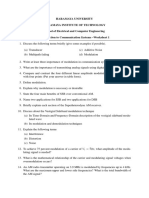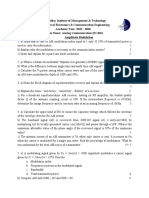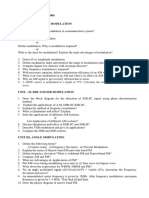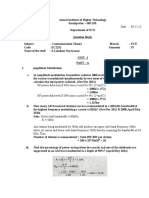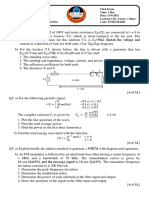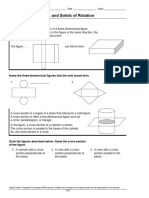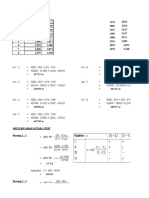0% found this document useful (0 votes)
5 views3 pagesTutorial AM
This document contains a tutorial for the Communication Theory I course at Mahindra University, focusing on various problems related to amplitude modulation (AM). It includes questions on calculating modulation indices, power outputs, and analyzing AM signals through different systems. The tutorial aims to enhance understanding of AM concepts through practical applications and mathematical computations.
Uploaded by
shivanireddygothammuCopyright
© © All Rights Reserved
We take content rights seriously. If you suspect this is your content, claim it here.
Available Formats
Download as PDF, TXT or read online on Scribd
0% found this document useful (0 votes)
5 views3 pagesTutorial AM
This document contains a tutorial for the Communication Theory I course at Mahindra University, focusing on various problems related to amplitude modulation (AM). It includes questions on calculating modulation indices, power outputs, and analyzing AM signals through different systems. The tutorial aims to enhance understanding of AM concepts through practical applications and mathematical computations.
Uploaded by
shivanireddygothammuCopyright
© © All Rights Reserved
We take content rights seriously. If you suspect this is your content, claim it here.
Available Formats
Download as PDF, TXT or read online on Scribd
/ 3








